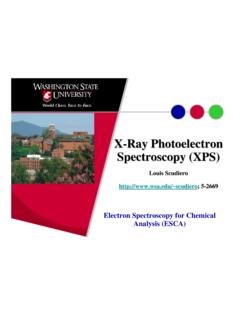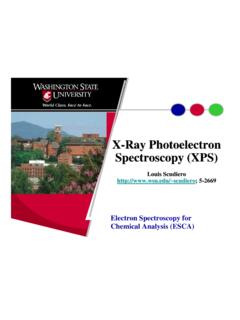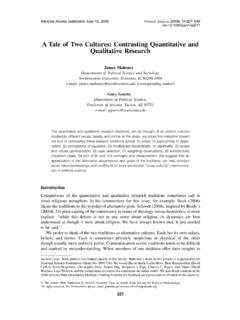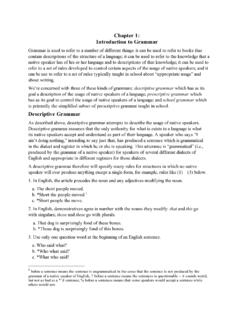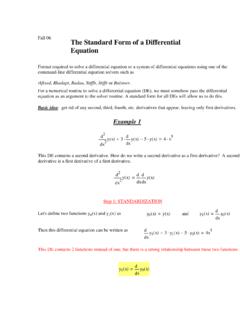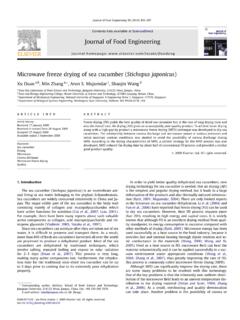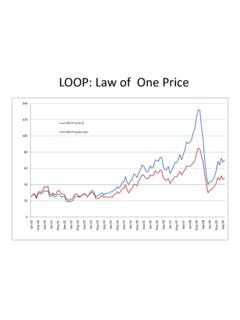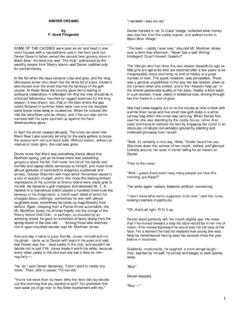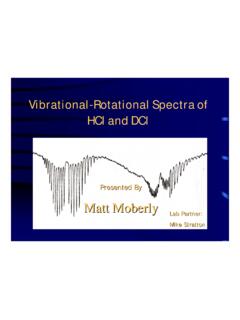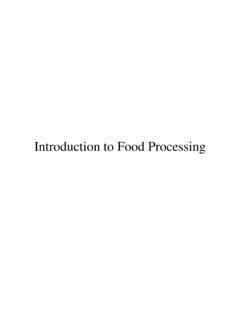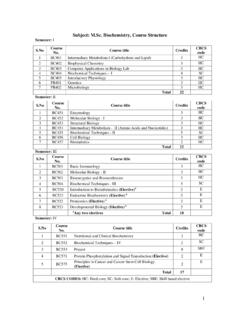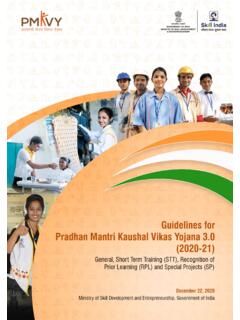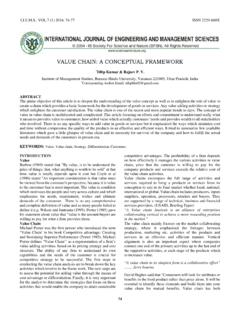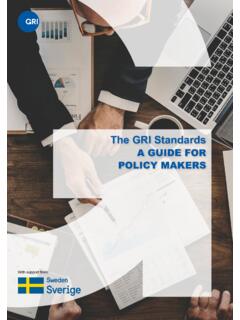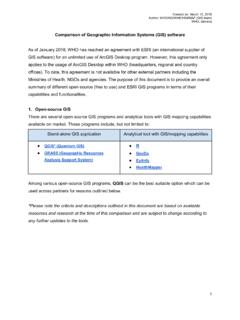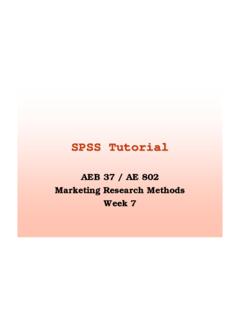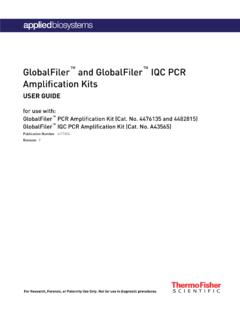Transcription of Genetics 301 Sample Final Examination Spring 2003 a ...
1 Genetics 301 Sample Final Examination Spring 2003 50 Multiple Choice Questions-(Choose the best answer) 1. A cross between two true breeding lines one with dark blue flowers and one with bright white flowers produces F1 offspring that are light blue. When the F1 progeny are selfed a 1:2:1 ratio of dark blue to light blue to white flowers is observed. What genetic phenomenon is consistent with these results? a. epistasis b. incomplete dominance c. codominance d. inbreeding depression e. random mating 2. Mutations which occur in body cells which do not go on to form gametes can be classified as: a. auxotrophic mutations b.
2 Somatic mutations c. morphological mutations d. oncogenes e. temperature sensitive mutations 3. What would be the frequency of AABBCC individuals from a mating of two AaBbCc individuals? 1/64 b. 1/32 c. 1/16 d. 1/8 e. 3/16 f. 1/4 4. The stage of meiosis in which chromosomes pair and cross over is: a. prophase I b. metaphase I c. prophase II d. metaphase II e. anaphase II 25. Polyploidy refers to: a. extra copies of a gene adjacent to each other on a chromosome b. an individual with complete extra sets of chromosomes c. a chromosome which has replicated but not divided d. multiple ribosomes present on a single mRNA e.
3 An inversion which does not include the centromere 6. A gene showing codominance- a. has both alleles independently expressed in the heterozygote b. has one allele dominant to the other c. has alleles tightly linked on the same chromosome d. has alleles expressed at the same time in development e. has alleles that are recessive to each other 7. The phenomenon of independent assortment refers to: a. expression at the same stage of development b. unlinked transmission of genes in crosses resulting from being located on different chromsomes, or far apart on the same chromosome. c. association of an RNA and a protein implying related function d.
4 Independent location of genes from each other in an interphase cell e. association of a protein and a DNA sequence implying related function 8. Mendel s law of segregation, as applied to the behavior of chromosomes in meiosis, means that: a. pairing of homologs will convert one allele into the other, leading to separation of the types. b. alleles of a gene separate from each other when homologs separate in meiosis I, or in meiosis II if there is a single crossover between the gene and the centromere. c. genes on the same chromosome will show 50% recombination d. alleles of a gene will be linked and passed on together through meiosis 9.
5 Which component of transcribed RNA in eukaryotes is present in the initial transcript but is removed before translation occurs: a. Intron b. 3 Poly A tail c. Ribosome binding site d. 5 cap e. codons coding for the protein to be produced 310. Choose the correct statement about the genetic code. a. includes 61 codons for amino acids and 3 stop codons b. almost universal; exactly the same in most genetic systems c. three bases per codon d. some amino acids are coded by multiple codons e. all of the above 11. X-chromosome inactivation a. normally takes place in males but not females b.
6 Is the cause of the Y chromosome being genetically inactive c. takes place in humans so that the same X chromosome is inactive in all of the cells of a female d. occurs in fruit flies but not in mammals e. results in genetically turning off one of the two X chromosomes in female mammals 12. DNA ligase is: a. an enzyme that joins fragments in normal DNA replication b. an enzyme involved in protein synthesis c. an enzyme of bacterial origin which cuts DNA at defined base sequences d. an enzyme that facilitates transcription of specific genes e. an enzyme which limits the level to which a particular nutrient reaches 13.
7 An Hfr strain of E. coli contains: a. a vector of yeast or bacterial origin which is used to make many copies of a particular DNA sequence b. a bacterial chromosome with a human gene inserted c. a bacterial chromosome with the F factor inserted d. a human chromosome with a transposable element inserted e. a bacterial chromosome with a phage inserted 414. An experiment was conducted in E. coli to map the following genes (pro, his, bio, met, phe and trp) on a circular map using 3 different Hfr strains. Strain 1 Order of transfer (early to late): trp met his pro Strain 2 Order of transfer (early to late): his met trp bio Strain 3 Order of transfer (early to late): pro phe bio trp Based on the results what is the most likely map?
8 A. b. c. d. 15. Generation of antibody diversity in vertebrate animals takes place through: a. the presence of as many genes in the germ line as there are types of antibodies possible. b. infection with bacteria carrying antibody genes c. infection with viruses carrying antibody genes d. polyploidy in antibody-forming cells e. rearrangement of DNA in tissues that go on to produce antibodies 16. Replication of DNA: a. takes place in a conservative manner b. takes place in a dispersive manner c. takes place in a semi-conservative manner d. usually involves one origin of replication per chromosome in eukaryotes e.
9 Takes place only in the 3 to 5 direction trp pro his phe met bio trp pro bio met phe his phe met bio pro trp his trp pro met bio phe his 517. A duplication is: a. an exchange between non-homologous chromosomes, resulting in chromosomes with new genes adjacent to each other. b. loss of genes in part of a chromosome c. an extra copy of the genes on part of a chromosome d. a reversal of order of genes on a chromosome e. an extra set of chromosomes in an organism 18. What is the co-transduction frequency for the A and B genes, from the following dataset? (Assume that there has been selection for the A+ form of the A gene).
10 Genotype Number A+B+ C+ 10 A+B+ C- 30 A+ B- C+ 20 A+ B- C- 40 a..10 b..20 c..30 d..40 e..50 19. A mutation in a codon leads to the substitution of one amino acid with another. What is the name for this type of mutation? a. nonsense mutation b. missense mutation c. frameshift mutation d. promoter muttion e. operator mutation 20. mapping of human chromosomes: a. has been restricted to the sex chromosomes because of small family sizes b. proceeded much more successfully as large numbers of DNA markers became available. c. has determined that the number of linkage groups is about twice the number of chromosomes d. has demonstrated that almost all of the DNA is involved in coding for genes e.
